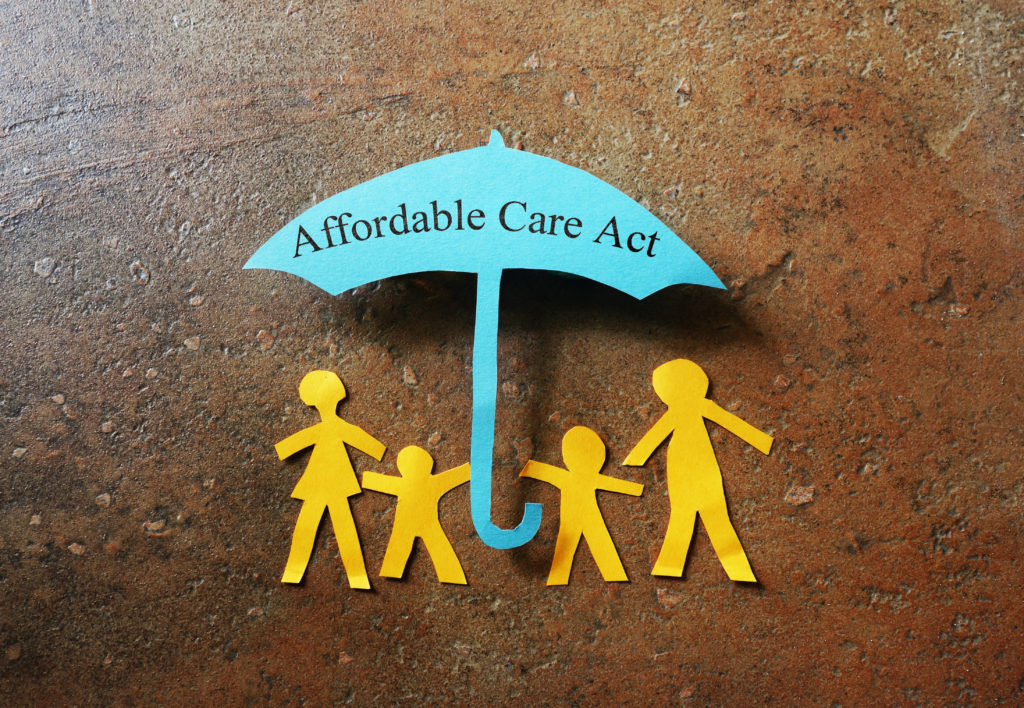President Trump Signs CARES ACT, What Does this Mean?

Fremont California, March 27, 2020 –
President Trump Signs CARES ACT.
As COVID-19 continues to threaten almost every aspect of our lives, our government has expedited passing legislation and President Trump has signed, the Coronavirus Aid, Relief, and Economic Security (CARES) ACT. The CARES ACT is a massive bill, the majority of which does not have a tax impact. With a $2.2 trillion price tag, the bill is the most expensive piece of legislation ever passed!
CARES ACT looks to make a significant impact on the economy by providing loan forgiveness, supporting small businesses, enhancing unemployment insurance, and providing federal loans to industries severely impacted by the pandemic. It will also provide tax relief and tax incentives for both individuals and businesses. The IRS has established a special section focused on steps to help taxpayers, businesses and others affected by the coronavirus. This page will be updated as new information is available. IRS information page: https://www.irs.gov/coronavirus
The ACT includes:
Relaxation of limitations on business deductions and deferral of taxes, recovery rebate for individuals and tax provisions that will impact 2019 and 2020 tax returns. For example, filing amended tax returns and net operating loss (NOL) carryback claims for prior years may be an opportunity for tax refunds. Other provisions include:
For Individuals
- As mentioned above, the NOL rules for individuals, estates, and trusts, with respect to business losses are modified.
- For taxpayers that itemize, the 60% of AGI limit for charitable cash contribution deductions to a public charity (including federal, state and local governments) for 2020 for cash contributions made during calendar year 2020 is suspended.
- The suspension does not apply to contributions to a donor-advised fund or a Sec. 509(a)(3) supporting organization.
- The excess business loss limitation applicable to noncorporate taxpayers in Sec. 461(l) for 2018, 2019 and 2020 taxable years, as well as makes some TCJA technical corrections is repealed.
- Retirement withdrawal rules in 2020 for coronavirus-related withdrawals under $100,000 are changed.
- 10% early withdrawal penalty waived
- Income attributable to distribution subject to tax over three years
- Increase in loans not treated as distributions to $100,000 and delay of repayment
- For 2020, required minimum distribution rules for some retirement plans and accounts are waived temporarily.
For Businesses (C-Corporations, Pass-through Entities and Sole Proprietors)
- Corporate alternative minimum tax (AMT) credits made available as part of AMT repeal in the TCJA to allow up to 100% of the credits to be refunded in 2018 tax year are modified.
- NOL rules are modified to:
- The 80% taxable income limitation for NOL deductions taken in taxable years prior to 2021 (i.e., NOL deductions taken in 2018, 2019 and 2020) is temporarily removed.
- Allow NOLs from 2018, 2019, or 2020 tax years to be carried back up to five taxable years.
- Additional changes as well.
- Employer’s share of Social Security taxes for the period beginning with the date of enactment through December 31, 2020, these taxes can be paid over the next two years, deferred.
- Half required to be paid by December 31, 2021
- Remainder to be paid by December 31, 2022
- Increases the limitation on charitable contribution deductions
- Increases the taxable income limitation for C corporations from 10% to 25% for 2020.
- Increases the taxable income limitation with respect to food inventory contributions for all taxpayers from 15% to 25% for 2020.
- A refundable Social Security tax credit equal to 50% of qualified wages paid by an “eligible employer” from March 12 through December 31, 2020
- Maximum credit of $5,000 per employee (based on maximum qualified wages of $10,000 per employee)
- For eligible employers with more than 100 FTEs during 2019, qualified wages are limited to wages paid to employees that do not work either due to a COVID-19 related government order or a significant decline in business
- For all other eligible employers, all wages paid to employees during a qualifying quarter may qualify for the credit.
- Tax-exempt organizations are eligible for the credit.
-
- “Eligible employer” is any employer that either
- Had its operations fully or partially suspended due to orders from a governmental authority due to COVID-19 or
- Experienced a significant decline in gross receipts in 2020 compared to the prior year
- Eligibility starts in the 2020 calendar quarter in which its gross receipts are less than 50% of the gross receipts for the same 2019 calendar quarter
- Eligibility ends in the 2020 calendar quarter in which its gross receipts are more than 80% of the gross receipts for the same 2019 calendar quarter
- “Eligible employer” is any employer that either
-
- All persons treated as a single employer under Sec. 52(a) or (b) or Sec. 414(m) or (o) will be treated as a single eligible employer for purposes of the credit
- The business interest limitation in Sec. 163(j) calculations for taxable years beginning in 2019 and 2020 are modified.
- For 2019 and 2020 the limitation to 50% of adjusted taxable income (ATI) is increased from 30%.
- The ATI increase from 30% to 50% does not apply for 2019 for partnerships; instead, a special rule allows 50% of excess 2019 interest limitation to be treated as paid or accrued by the partner in 2020.
- Allows all taxpayers to elect to use 2019 adjusted taxable income for purposes of computing the interest limitation for 2020.
- The limitation on charitable contribution deductions is increased
- For 2020 the taxable income limitation for C corporations increases from 10% to 25%.
- For 2020 the taxable income limitation for food inventory contributions increases from 15% to 25% for 2020.
- Allows qualified improvement property to be eligible for 100% bonus depreciation and a 15-year recovery period for property placed in service after September 27, 2017, a technical correction to the TCJA
- Employer payments of student loans, either by payment to the employee or to the lender, are excluded from employee income if made before January 1, 2021 (subject to the present law limit of $5,250 in Sec. 127)
- Provides a suspension of certain aviation excise taxes
- Provides an exception from the alcohol excise tax for the use of alcohol to make hand sanitizer
There are some smaller, yet still significant provisions in the CARES Act impacting federal tax can be found outside of the tax-related division of the bill, such as:
- The exclusion from tax of any forgiven small business loans, mortgage obligations, or other loan obligations forgiven by the lender during the applicable period.
- Pension funding relief for failures to meet contribution requirements to define contribution plans during 2020.

For more smaller yet still significant provisions, please see our earlier article after the house and Senate passed the bill. The entire CARES ACT, can be found here.
We hope you found this article about President Trump Signs CARES ACT helpful. If you have questions or need expert tax or family office advice that’s refreshingly objective (we never sell investments), please contact us or visit our Family office page or our website at www.GROCO.com. Unfortunately, we no longer give advice to other tax professionals gratis.
To receive our free newsletter, contact us here.
Subscribe to our YouTube Channel for more updates.
Considerately yours,
GROCO, GROCO Tax, GROCO Technology, GROCO Advisory Services, GROCO Consulting Services, GROCO Relationship Services, GROCO Consulting/Advisory Services, GROCO Family Office Wealth, and GROCO Family Office Services.

Alan L. Olsen, CPA, Wikipedia Bio

GROCO is a proud sponsor of the American Dreams Show.

Unusual Habits Creative People Have in Common
Unusual Habits Creative People Have in Common If you spend some time considering some of the most creative people in the world and the many contributions they’ve made to society, you will surely be amazed. From Steve Jobs and Bill Gates in the tech industry to Warren Buffet in the business world, as well as…
The Most Valuable Items to Include In Your Garden
The most valuable items to include in your garden may surprise you. Gardens come in all shapes and sizes and can be very personal. Plus, with so many diverse fruits and vegetables, there is no end to what you can grow in your own personal garden. However, what kinds of things have the most value?…
The Top Meaningful Jobs That Also Pay Well
The Top Meaningful Jobs That Also Pay Well Most people want to find purpose in their life. Even the wealthiest of individuals typically come to realize that there is so much more to life than making money. After all, if you don’t have opportunities to enjoy your success, does it really matter how much money…
Increasing the Value of Your Business
Increasing the Value of Your Business This blog deals with the process of increasing business value from the perspective of a buyer of the business. The real value of a business is the amount for which it can be sold, but the maximum value is dependent not just on what a buyer will pay, but…




